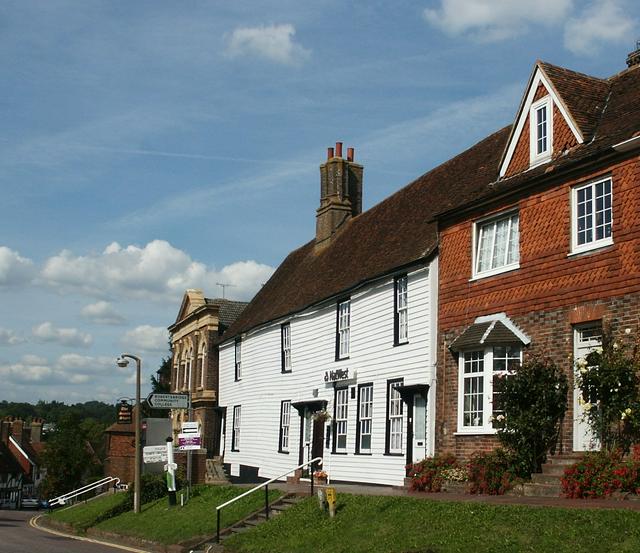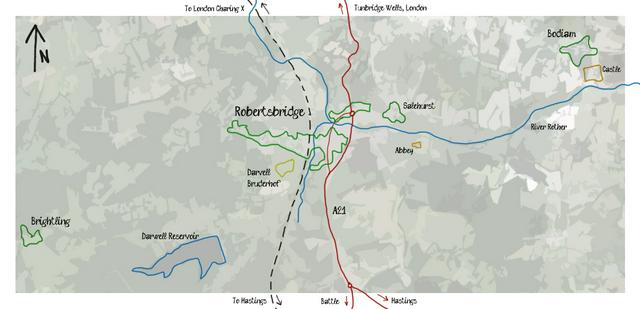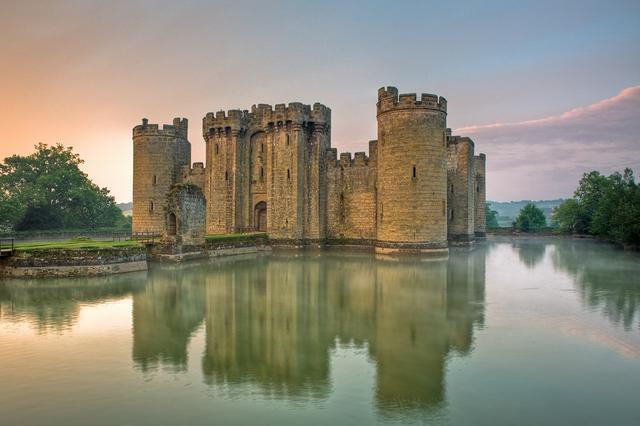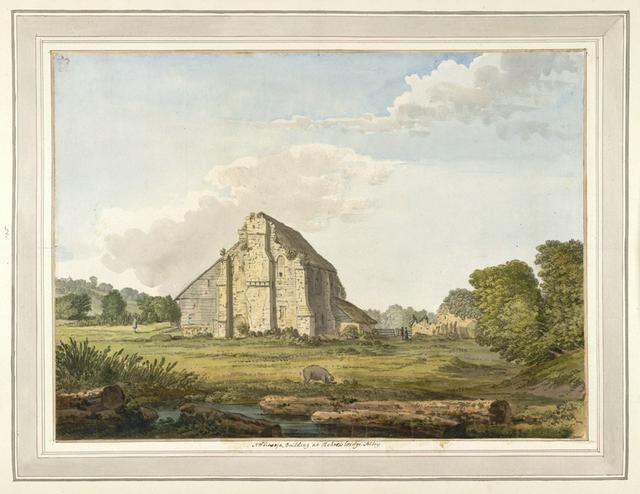Robertsbridge is in East Sussex. 

Robertsbridge is a village (pop. roughly 2,500) in the county of East Sussex, England. Dating from the 10th century AD it is a quaint place with relatively little to see, but due to its location on the main railway line from London to Hastings and the corresponding main road (A21), it represents a good potential base to discover the picturesque local countryside, sights, towns and villages nearby. These include (in order of proximity); Bodiam Castle, Brightling, Battle, Hastings, Tunbridge Wells and Rye.
There are a handful of inns and bed-and-breakfasts in the village, offering mid-range homely accommodation. The Seven Stars Inn is said to be one of the most haunted pubs in Britain.
Robertsbridge hosts a few unique features; The "Bruderhof", a faith community living in a self-sufficient commune at the edge of the village. They wear traditional late-19th-century style work garb and can often be seen on walks around the village and surrounding countryside. They are very friendly and welcoming people, and a number of public footpaths run through their land. They also produce and sell wooden carved toys and furniture.
The famous cricket brand Gray Nicolls (the Nicolls part) was founded in Robertsbridge, and operates from its original location on station road to this day, making (among other things) handmade cricket bats.
Also the Rother Valley Railway finds its most westerly extension at Robertsbridge station. This steam locomotive company will join the existing Kent and East Sussex railway between Tenterden and Bodiam, where the line is awaiting connection to the existing line at Robertsbridge, through the Rother Valley and over the A21 main road. A small collection of steam trains and carriages are kept at Robertsbridge station and operated occasionally on the short track up to the A21. As of 2014, a new steam railway station, dubbed "Robertsbridge Junction Station" is being built alongside the Robertsbridge mainline station. Once complete, tourists will be able to visit famous attractions like Bodiam Castle by steam train from Robertsbridge.


- Bodiam Castle, Bodiam, near Robertsbridge, TN32 5UA, +44 1580 830196. Just a few kilometres away. Its well preserved exterior has been used in many famous films, including Monty Python's search for the Holy Grail.
- Cricket enthusiasts can visit the founding factory of the famous bat maker Gray Nicolls, still in use today. It is located on station road, close to the village centre. Be aware, it is an operating workplace and not a museum, though polite enquiry at the reception is sure to be met with friendliness.
- The small village of Brightling, which was home to eccentric John 'Mad Jack' Fuller (1757-1834) who built numerous follies and landmarks around the village, including an observatory and a pyramid mausoleum for himself in the churchyard, where he now lies entombed. Brightling is only reachable by car, bike or foot.
- Battle abbey in Battle, a nearby small historic town, famed for the location of The 1066 Battle of Hastings, whereby William the Conqueror took control of England and changed the course of history forever.
- Robertsbridge Cistercian abbey, unfortunately little remains of this historic site, though some ruins are still visible and can be easily reached on a walk or short drive from the village on the other (eastern) side of the A21 road. It was founded in 1176 by the Abbot, Robert de St Martin. The village owes its name to this Robert.
Bodiam Castle, Bodiam, near Robertsbridge, TN32 5UA, +44 1580 830196. Just a few kilometres away. Its well preserved exterior has been used in many famous films, including Monty Python's search for the Holy Grail.
Cricket enthusiasts can visit the founding factory of the famous bat maker Gray Nicolls, still in use today. It is located on station road, close to the village centre. Be aware, it is an operating workplace and not a museum, though polite enquiry at the reception is sure to be met with friendliness.
The small village of Brightling, which was home to eccentric John 'Mad Jack' Fuller (1757-1834) who built numerous follies and landmarks around the village, including an observatory and a pyramid mausoleum for himself in the churchyard, where he now lies entombed. Brightling is only reachable by car, bike or foot.
Battle abbey in [[Battle]], a nearby small historic town, famed for the location of The 1066 Battle of Hastings, whereby William the Conqueror took control of England and changed the course of history forever.
Robertsbridge Cistercian abbey, unfortunately little remains of this historic site, though some ruins are still visible and can be easily reached on a walk or short drive from the village on the other (eastern) side of the A21 road. It was founded in 1176 by the Abbot, Robert de St Martin. The village owes its name to this Robert.
Bonfire night, Held annually around the 5th of November, this celebration attracts people from miles around and is by far the biggest event of the year for the village. A large parade is held in carnival atmosphere, usually starting from the station and proceeding towards the recreational ground via the high street. A huge bonfire is lit, complete with Guy Fawkes' effigy, and the night culminates in a great fireworks display that goes well beyond its rural setting in terms of significance and spectacle. The event is free, with a street collection on the evening to help raise money for charity.
The village only offers local amenities. Two small convenience stores, a local chemist, baker, florist and hair-dresser.
Apart from its 3 pubs offering hearty traditional meals, Robertsbridge also has a good Indian Restaurant
- New Spice, 13 High St.
New Spice, 13 High St.
- Seven Stars Inn, High Street, TN32 5AJ, +44 1580 880333. Over 600 years old and reputedly among the most haunted pubs in England. Open all day every day.
Seven Stars Inn, High Street, TN32 5AJ, +44 1580 880333. Over 600 years old and reputedly among the most haunted pubs in England. Open all day every day.
